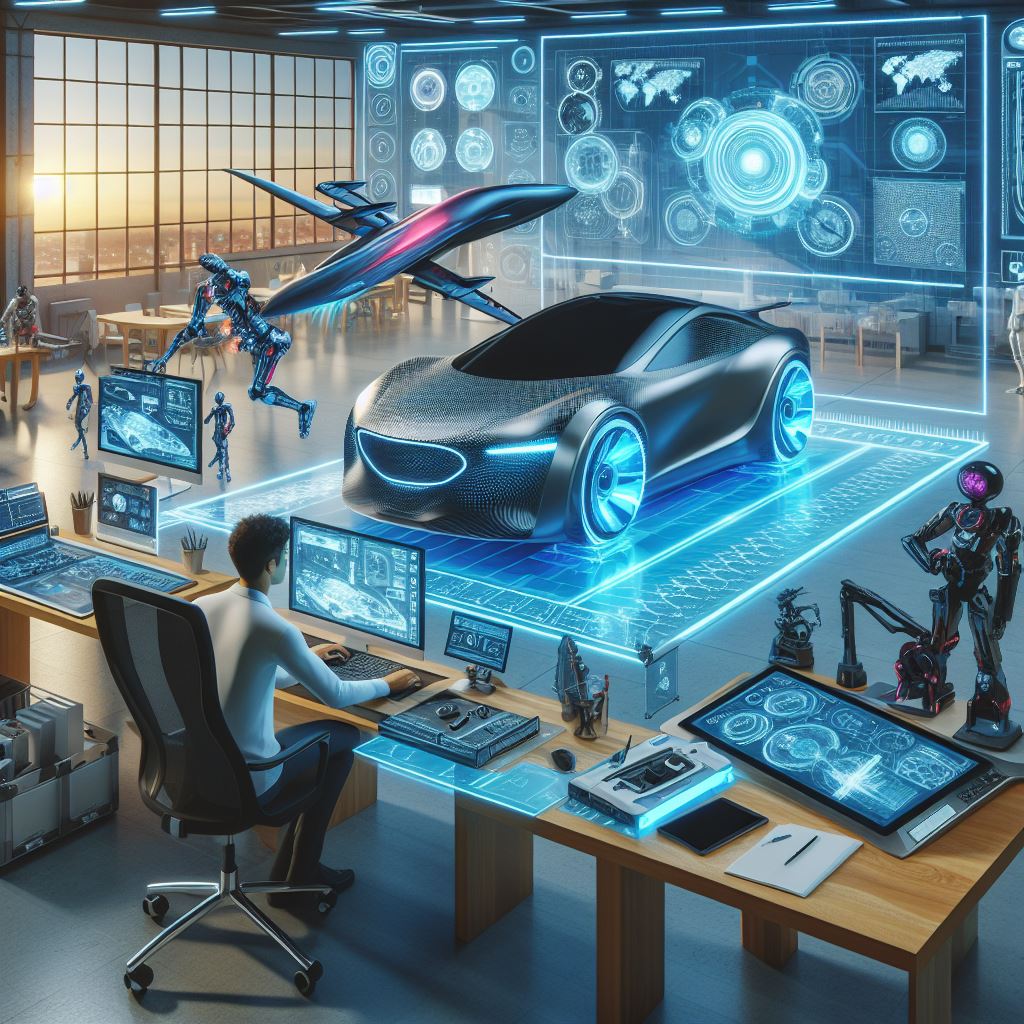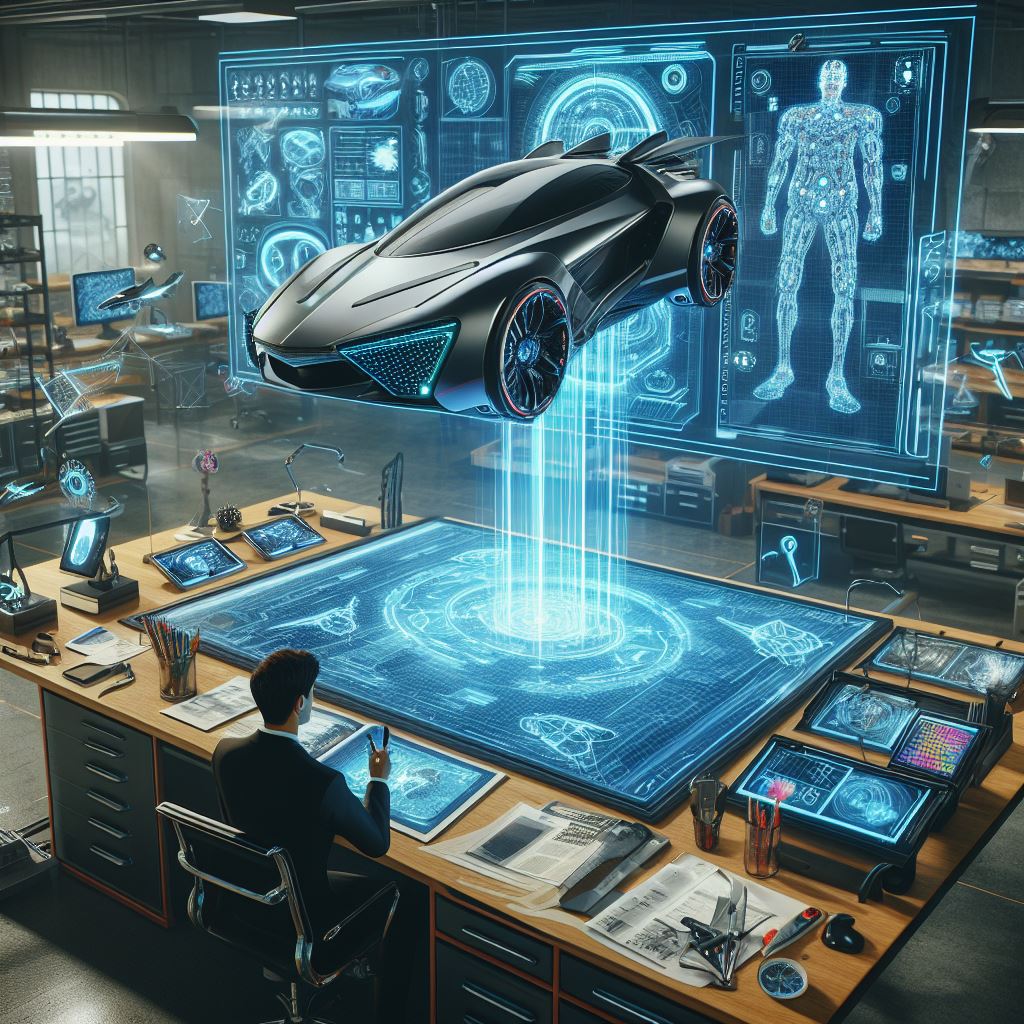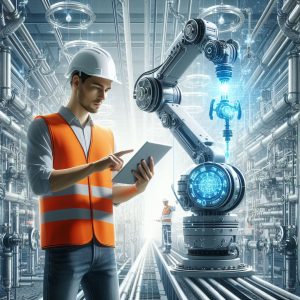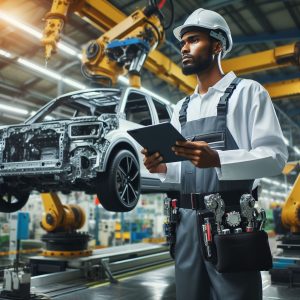The automotive industry is undergoing a profound transformation, driven by the rapid advancement of artificial intelligence (AI). With AI-powered tools and technologies, vehicle designers can now create vehicles that are safer, more efficient, and more enjoyable to drive.
AI’s Impact on Vehicle Design
AI is enabling vehicle designers to create vehicles that are more aerodynamic, more stylish, and more ergonomic. By analyzing large datasets of vehicle design features, AI can identify patterns and trends that humans might miss. This information can then be used to create vehicles that are more streamlined and efficient.
Additionally, AI can be used to create virtual reality (VR) environments that allow designers to experience the vehicles they are creating in a realistic way. This can help them to identify potential problems early on in the design process, before they become expensive to fix.
AI’s Impact on Vehicle Engineering
AI is also having a major impact on vehicle engineering. By analyzing large datasets of vehicle performance data, AI can identify inefficiencies and areas for improvement. This information can then be used to create vehicles that are more fuel-efficient, more powerful, and more reliable.
Additionally, AI can be used to create virtual test environments that allow engineers to test vehicles under a variety of conditions. This can help them to identify potential problems early on in the engineering process, before they become dangerous.
AI’s Impact on Vehicle Safety
AI is also playing a major role in improving vehicle safety. By analyzing large datasets of crash data, AI can identify factors that contribute to accidents. This information can then be used to create vehicles that are more resistant to crashes and that have more advanced safety features.
Additionally, AI can be used to create advanced driver assistance systems (ADAS) that can help drivers to avoid accidents. These systems can include features such as lane departure warning, blind spot monitoring, and adaptive cruise control.
Conclusion
AI is having a transformative impact on the automotive industry. By enabling vehicle designers and engineers to create vehicles that are safer, more efficient, and more enjoyable to drive, AI is helping to make the world a better place.
Here are some specific examples of how AI is being used to transform the automotive industry:
- Design: AI is being used to create vehicles that are more aerodynamic, more stylish, and more ergonomic. For example, Toyota is using AI to design vehicles that are more fuel-efficient and have a lower environmental impact.
- Engineering: AI is being used to create vehicles that are more fuel-efficient, more powerful, and more reliable. For example, Volvo is using AI to develop new powertrains that are more efficient and environmentally friendly.
- Safety: AI is being used to create vehicles that are more resistant to crashes and that have more advanced safety features. For example, Ford is using AI to develop new vehicle safety systems that can help to prevent accidents.
AI is still a relatively new technology, but it is already having a major impact on the automotive industry. As AI continues to develop, we can expect to see even more transformative changes in the way that vehicles are designed, engineered, and used.

Dangers of Vehicle Designer Job in the Auto Industry
Possibilities of Job Being Replaced by Artificial Intelligence (AI)
How AI Can be used to Help in the Job
How to Adapt to the Changing Landscape
As artificial intelligence (AI) continues to advance, there is a growing concern that many jobs, including those of vehicle designers, could be replaced by AI-powered machines. This could have a severe impact on the auto industry, as vehicle designers play a critical role in creating the aesthetic and functional aspects of cars, trucks, and other vehicles.
Several factors make vehicle designer jobs susceptible to AI replacement:
- AI is already being used to develop autonomous vehicles and other advanced automotive technologies. This is leading to a decrease in demand for human vehicle designers, as AI-powered systems can perform many of the same tasks that human designers can do.
- AI is getting better at creating photorealistic images and designs. This means that AI-powered systems could soon be used to create vehicle designs that are just as good as those created by human designers.
- *AI can be used to optimize vehicle designs for performance, safety, and efficiency. This could lead to the development of vehicles that are better than those designed by humans.
Possibilities of Job Being Replaced by AI:
The possibility of AI replacing vehicle designers is not just a distant threat. In fact, it is already happening. Several companies are already using AI to develop autonomous vehicles and other advanced automotive technologies. As these technologies continue to be developed, the demand for human vehicle designers will likely decrease.
How AI Can be Used to Help in the Job:
While AI could replace vehicle designers, it can also be used to help them. AI-powered systems can be used to automate repetitive tasks, such as creating 3D models and generating design iterations. This can free up vehicle designers to focus on more creative and strategic aspects of their work.
AI can also be used to generate new and innovative design ideas. AI-powered systems can analyze large datasets of vehicle designs and identify patterns and trends that human designers might miss. This can help vehicle designers to come up with new and exciting designs that appeal to a wider range of consumers.
How to Adapt to the Changing Landscape:
Vehicle designers who want to stay ahead of the curve and avoid being replaced by AI need to adapt to the changing landscape. Here are a few tips:
- Learn about AI and how it is being used in the auto industry. This will help you understand the threats and opportunities that AI poses to your job.
- Develop skills that are complementary to AI. This includes skills in areas such as creativity, problem-solving, and critical thinking.
- Be open to change and be willing to learn new things. The auto industry is constantly evolving, and vehicle designers who are willing to adapt will be more successful than those who are resistant to change.
By following these tips, vehicles designers can adapt to the changing landscape and continue to succeed in their careers.



